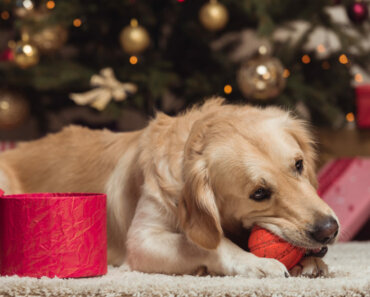Don’t turn to unreliable internet sources for info on using essential oils with your dog or cat. Quality and dosage are two of the most important factors to consider.
As a veterinarian specializing in essential oils, I am often asked the following question: “Which essential oils are toxic to my dog or cat?” It doesn’t take much effort to find information about essential oils on the internet — but where is this information coming from? How reliable is it? Over and over, you’ll find claims that Tea Tree, Orange or another essential oil is toxic to dogs or cats. Are any of these claims true, and how do you separate fact from fiction? And what’s the best way to use essential oils with your own animal?
My own question is always: “Who wrote the article?” Unfortunately, even blogs and articles written by those who seem to have a decent knowledge base are often flawed. Veterinarians will issue warning statements, when in fact they have never properly worked with essential oils and animals. Certified aromatherapists will issue cautionary statements, when they have never worked with animals at all. I would say that for almost every essential oil I use safely in my Veterinary Aromatic Medicine work, I can find a cautionary statement on the internet claiming that oil is toxic. Who has the most reliable information? How can we ever know who is right, and who is wrong?
Quality, dosage — and route of use
1. Quality matters. Everyone agrees that poor quality pet foods can create health problems over time. Higher quality foods increase health and wellness, and we don’t see certain issues (such as urinary blockage in cats) when diets is optimal.
It’s the same with essential oils. Select a poor quality oil, and you are more likely to see adverse effects. Poor quality oils have a much lower “safe dose”. They’re much like perfumes, and have often been cultivated or created for the fragrance industry. Spray a cat with perfume, and you wouldn’t be surprised if it causes health issues.
2. Dosage is also important. For example, despite popular opinion, essential oils can be used with cats; it’s just that the dosages are very different from those for dogs.
3. The oil’s safety will also hinge on its intended route of use. For example, I may say that Orange essential oil can be safely used for diffusion, but it’s not one I often recommend for topical use.
The most difficult question to answer
The question is, how do you know if you have a good quality oil, and what the dosage should be? This is the hardest question to answer. For over a decade, I have worked with all sorts of essential oils in many animal species, alongside veterinary monitoring (more on this later). By evaluating many different essential oil sources, I have become familiar with which oils tend to be of poor quality, and are adulterated or oxidized.
Over time, I developed and trained my sense of smell, and can usually detect older “off” oils from newer ones. Without an extensive experience base, however, I would say that most people wouldn’t know whether or not their essential oils are old, or if they are coming from a reputable supplier. There is so much hype out there, and all companies know what consumers want to hear. Even poor quality oils often have chemistry reports and all the “wording” you would expect to find with a high quality product. It isn’t hard to say that an oil is of “therapeutic quality”, or show some numbers that no one usually understands. These statements and reports understandably lead most people to assume the oils are of high quality, but unfortunately, this is simply untrue.
In short, suppliers should be held to higher accountability if they claim their essential oils are safe to use with animals. Some do recommend that their oils not be used around animals. But that doesn’t mean the oils from another supplier who doesn’t make this statement are therefore safe, since the quality of their products may not be high enough to even warrant use with animals.
Using essential oils with veterinary monitoring
If you cannot source a high quality essential oil that is known to be safe for dogs and cats (hopefully in conjunction with a knowledgeable veterinarian), there is only one true way to ensure the safety of a particular oil and its source – by using it in conjunction with veterinary monitoring.
Veterinary monitoring should consist of a physical examination, CBC, chemistry profile and possibly a urinalysis before oils are used. Once this baseline data is collected, you may start using a “low dose” of the essential oil or blend in question.
Knowing what this “low dose” is represents another challenge since there are no set doses, nor a perfect understanding of the proper dose for any essential oil. In my own veterinary work, I started with the essential oil protocols that had already been used with animals. At least that way I knew there were four or five animals of that species who had been previously exposed to “that dose” of the oil and did not appear to be harmed. After one to two weeks of using an essential oil with an animal, I repeated the examination and lab work, which enabled me to see direct results. This is, of course, a labor-intensive process. It is not quick or free. But it is how I proceeded when I started using essential oils in my practice.
It doesn’t mean I always had perfect outcomes. Once, based on another veterinarian’s advice, I gave an essential oil capsule to my own cat with horrible consequences. But I didn’t instantly assume that all essential oils are bad. I took a step back, and realized that my decision to trust my fellow veterinarian fell into the realm of “hype”, which is common with essential oil use. I thought I could trust the advice because it came from a colleague, but it was too aggressive and constituted an overdose. Although I felt awful about the situation, I used it to further my knowledge of oils, without excluding the good they can do when used properly. Since that experience, I have used this same essential oil in cats – but at a fraction of the dose – with beneficial results.
 Are some individual oils safer than others?
Are some individual oils safer than others?
I have a short list of essential oils that tend to be safer than others (see sidebar at right). These oils are not often adulterated, though they still have to be greatly respected when it comes to dosage. You should always strive to use the lowest dose you possibly can, while working with an experienced veterinarian.
Single essential oil use tends to carry with it a greater opportunity for adverse events. Diffuse Eucalyptus alone, for example, and you are only administering that particular essential oil. (There are also many Eucalyptus species, so it is always very important to know which species someone is referring to and using.) Adding salt to soup enhances it, but eating plain salt is pretty gross, and could actually result in “salt toxicity”. Essential oils should be blended together to enhance their safety. Eucalyptus (globulus, let’s say) mixed with Tangerine and Spruce oils can be administered at a lower “total dosage”, thus increasing its safety margin.
Essential oils have powerful healing qualities, but like anything else, they need to be used properly. Don’t rely on the internet for your information, but instead, work with a holistic or integrative veterinarian who has plenty of experience in essential oil use. And always keep quality, dosage and route of use in mind!





























